Shanenawa
- Self-denomination
- Shanenawa
- Where they are How many
- AC 769 (Siasi/Sesai, 2020)
- Linguistic family
- Pano
The history of the Shanenawa people is typical to those experienced by most of the indigenous populations in Acre. At the start of the 20th century, they were victims of the rapid and violent occupation of the region to extract caucho and rubber. As the regional economy developed, the Shanenawa were initially used as a workforce to supply meat and other food items to the workers in the rubber extraction areas, before being integrated later by force in the actual extraction of the rubber and the activity of taming the ‘wild’ Indians on the upper Envira River.
After a number of relocations, the Shanenawa moved to live in an area of land that was later homologated under the name Katukina/Kaxinawa. This was due to a mistake since they were confused with Katukina Indians and called as such. Fearing that they would lose the right to their lands, bearing in mind the lengthy history of violence and injustice to which they had been subjected, the Shanenawa decided not to reverse this misunderstanding. Linguistic studies conducted in the 1990s confirmed that the Shanenawa language is indeed part of the Pano family rather than a Katukina language.
Language
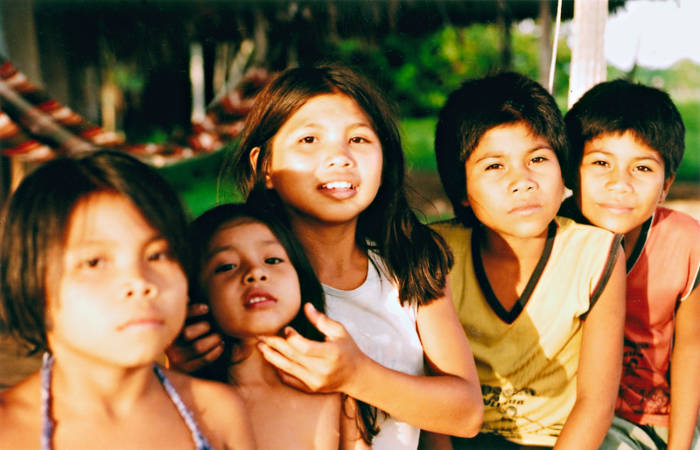
The Shanenawa language belongs to the Pano family and is spoken primarily by the older generation. Despite being prohibited during the period when they were working in the rubber extraction areas, the Shanenawa never forgot their language.
Young people and children, though they understand the language spoken by their parents, talk among themselves exclusively in Portuguese. Despite this fact, it is notable that some of the older people among the Shanenawa, allied with the younger generation, are strongly engaged in the fight to maintain the cultural identity of the people and always look to communicate in Shanenawa.
Moreover, the community schools have been conceived as a space for learning the language, in opposition to the schooling process in the city, which not only ignores the indigenous language but also indigenous ways of life.
[Gláucia Vieira Cândido, 2004; Project: ‘Strengthening the Shanenawa culture of Nova Vida village,’ submitted by the Nova Vida village to the Indigenous Cultures Award - Xicão Xukuru Edition, 2008]
Name
Etymologically the name ‘Shanenawa’ is composed by the forms shane (blue-coloured bird) and nawa (‘stranger’ people). Hence their name translates as the ‘blue bird people.’
The Shanenawa say that the bird is only rarely seen, but its appearance is a sign of conflict and warfare among indigenous groups.
[Gláucia Vieira Cândido, 2004; Project: ‘Strengthening the Shanenawa culture of Nova Vida village,’ submitted by the Nova Vida village to the Indigenous Cultures Award - Xicão Xukuru Edition, 2008]
Location
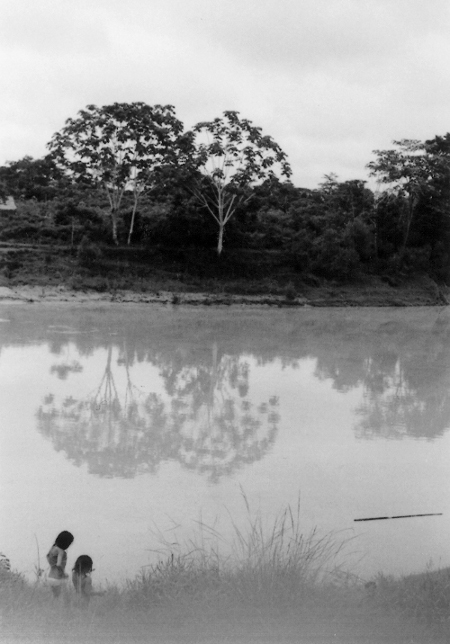
The Shanenawa inhabit the mid-north region of Acre, on the left shore of the Envira River, in the municipality of Feijó. On their origin, the literature suggests that the people did not inhabit this region of the Envira previously, although accounts exist of traces of occupation of these lands in the more remote past. According to the older generation, the Shanenawa migrated to this region, coming from other areas situated on the upper Gregório River, due to the correrias (armed persecutions of indigenous peoples that accompanied the opening and installation of the rubber extraction areas in Acre at the end of the nineteenth century and the start of the twentieth). For some decades, the migrants occupied the territory spanning the upper courses of the Juruá, Purus and Envira rivers, the latter in the municipality of Feijó, on the border with the south of Amazonas state.
[Gláucia Vieira Cândido, 2004]
Contact History
After three or four decades of persecutions and suffering caused by the violent occupation and exploration of Acre, a new period began, encompassing the decades from the 1910 to 1980. This period saw the entrenchment of the rubber companies that set up on the main rivers and founded settlements to tap rubber throughout the entire region, leaving little space for the small indigenous groups to take refuge.
As the rubber economy developed, the Indians were allocated as the workforce to provide game meat and other food produce, before being integrated later by force into working in the rubber extraction areas and rubber tapping itself. In addition to these activities, the Shanenawa also participated in the ‘taming’ of the ‘wild’ Indians – as the uncontacted Indians were labelled – from the region of the upper Envira River.
Their ways of life were restructured: their settlement was transferred to an area deeper within the forest where the rubber trees were located. There was more game, but at the same time they had to leave behind the large quantity of fish available in the larger rivers, as well as the swidden crops that they used to harvest throughout the year.
The period of decline in rubber extraction allowed room for cattle ranching in the region, which considerably increased the conflicts over land ownership.
In 1930, after some Shanenawa Indians went to the Envira River and after spending some time closer to headwater areas, they arrived in the city of Feijó to work on a rubber extraction area. The Morada Nova village was the first and, still in 2000, represented the largest Shanenawa settlement. A little while later, it split up and gave rise to another three. During this period, it was noticed that this village exerted some influence over the others, although the territorial and sociopolitical spaces established by each were respected.
Later, when the rubber extraction area changed owner, the Shanenawa were allowed to live on their lands. Following the opening of the BR-364 highway and the worsening of the conflicts between Indians and colonists, FUNAI began the long process of recovering their lands, which lasted around ten years.
The territory inhabited by the Shanenawa today was first occupied at the end of the 1950s and incorporated as a space where they pursued their subsistence activities and their social, political and cultural organization.
[Carlos Antônio Bezerra Salgado, 2005]
The Fight for Land
During the period when they first started exploring Acre’s lands, although the rubber tappers had direct contact with the diversity of indigenous groups in the region, they were uninterested in the obvious linguistic and cultural differences. A few names were used to baptize all the indigenous populations, the same name very often being applied to completely different groups.
As towns began to be built in territories previously home to indigenous populations, the Shanenawa lost their land and were left with nowhere else to settle. They were forced to work in rubber tapping as employees of the whites just in order to survive. Even so, these ‘rubber bosses’ expelled them from the land when they had no more work for them. This happened everywhere that the group went, since they could only stay on the rubber extraction area while there was work.
The Shanenawa say that they frequently insisted to the Acre state authorities that they needed a place to live. They claimed that their people were dying from diseases, hunger and even at the order of the ‘bosses’ when they resisted the order to leave. After some time they discovered a document that proved their occupation of the land, according to a report produced by CIMI (1976). The document in question says that they were living on a piece of land belonging to the government, which had bought the rubber extraction area and distributed various parts, including to the Indians. This was a provisional document later substituted by a land deed when the Indigenous Land was officially demarcated.
After some time in contact with the region’s non-indigenous settlers, the Shanenawa discovered that they were thought to be Katukina rather than Shanenawa, their original name. The mistake seems to have originated from a sign placed in the village, facing the Envira River, which identified the group as Katukina. Subsequently they decided to check the name used on the land document and discovered that there too they were registered under the name Katukina.
Realizing the mistake, some Shanenawa approached the relevant authorities but were told that were they to insist that they were not Katukina they would end up losing the land. Recalling all the difficulties they had experienced in the past, they decided that the error in the ethnonym was not a major concern since what they really needed was the land.
[Maria Sueli de Aguiar, 1992; Carlos Antônio Bezerra Salgado, 2005]
Cosmology and rituals
The Shanenawa belief in the existence of forest spirits, the jusin, is very clearly apparent. These spirits are beyond nature and humans alike, making them supernatural and superhuman. There are good and bad jusin. The principal such entity is called jusin tsaka who, the Indians say, takes the form of a monstrous animal that destroys and burns everything as it passes by. The Shanenawa say that it is very common to find the footprints of jusin tsaka in the morning, since the spirit only ‘attacks’ at night. The adults use the figure of this jusin to scare children and make them obey them.
The Shanenawa consume ayahuasca (called umi in their indigenous language), a drink based on a particular vine species and hallucinogenic leaves that induces visions. Through these visions, they communicate with the spirits of their ancestors and obtain help to solve their problems. Umi is also used as a medicine, since they believe that by ingesting it will make their body healthy.
The Indians claim that the community does not possess a shaman. All the same, their herbal medicine is very rich and includes remedies for practically everything. They also use fauna for cures, the most sought being toad venom or vaccine. The Indians apply the substance, taken from a rare species of giant leaf frog, Phyllomedusa bicolor, to their arms at three points burnt with fire. In a few minutes, they vomit the entire contents of their stomach and thereby renew their strength and disposition to work. The toad venom is associated with the medicinal property of dispelling laziness and panema, a term taken from the Nheengatu general language, which means a lack of fortune in hunting.
After the beginning of the intense contacts with the non-Indians, many Shanenawa began to express beliefs in religions like Catholicism.
[Gláucia Vieira Cândido, 2004]
Mariri and the Shanenawa ritual games
Still on the topics of traditional rituals, there are records of very interesting aspects. One of them is mariri, a word taken from Nheengatu to designate a typical event among the Shanenawa and among other Pano populations. Mariri has no set date to take place, but it more commonly occurs in Acre’s summer, a period with little or no rain, spanning from April to September, thereby making it easier to walk around the villages due to the absence of mud. Any member of the group may take part in the dance as long as they rehearse the songs taught by their ancestors. For mariri, the group’s members paint themselves with annatto and genipap and wear a dress made from strips of tree bark. During the mariri periods, many other events are registered such as the act of masquerading as jusin tsaka, which the Indians interpret as ‘werewolf.’ Generally, one of the men is covered in tree branches and banana leaves and enters in the middle of the dancers, frightening everyone.
Another activity that occurs during these mariri events is the ‘sugar cane game.’ This involves one of the men fighting for a piece of sugar cane with one or more women. The women are allowed to use all their strength to grab the piece of cane from the man, but they cannot use physical violence, only verbal.
Another very popular game is that of the ‘waxy pole.’ The Indians spread tallow on a long pole stuck into the ground and placed a valuable item on the tip. The person who managed to reach the top without slipping down took the item. Nobody knows for sure whether the Indians learnt the game from non-Indians or vice-versa. What is known, though, is that the ‘waxy pole’ game can be seen in various regions of Brazil as well as in Peru during the ‘burning of Judas.’ Hence, the second explanation is probably the most likely.
Among other activities, the Shanenawa also practice archery and swimming as competitions, both of which are very popular and proudly maintained by this people. They also play football. Small pitches are found in the villages and are heavily used on Saturdays. They compete in matches with teams formed by players from the villages themselves or, during larger festive events, against teams from other ethnic groups.
[Gláucia Vieira Cândido, 2004]
Dwellings
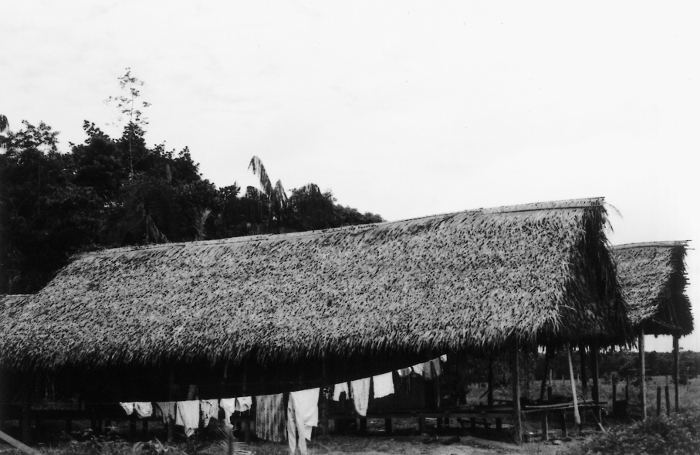
Although recently more houses have been built from planed wood and aluminium roofing, similar to those of non-Indians found in urban areas of Acre, the indigenous villages are still largely dominated by houses based on the rubber tapper architecture: structures built on wooden stilts about 40 centimetres above the ground and covered with woven straw.
The Shanenawa used to live in cupixauas, which were large indigenous constructions made largely with straw, typically inhabited by all the families of a clan. The kitchen is the most exposed area of the house and the place where visitors are welcomed. The paddles used to mash banana and sweet manioc and other domestic utensils are similar to those used by non-Indians. Food is prepared over log fires.
[Gláucia Vieira Cândido, 2004; Carlos Antônio Bezerra Salgado, 2005]
Economic activities and diet
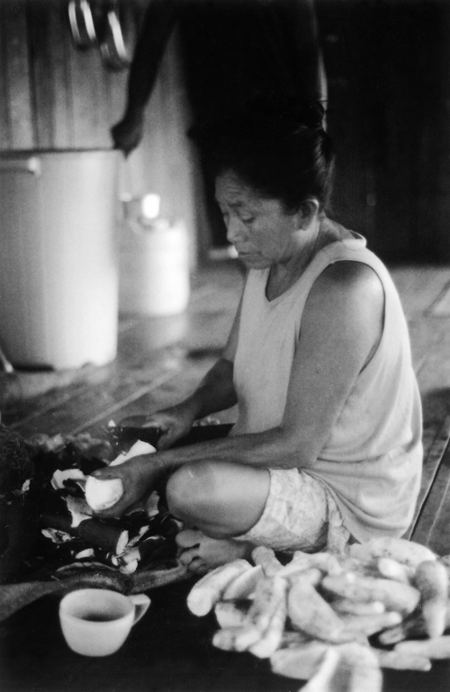
The Shanenawa maintain a subsistence economy, supplementing their diet by purchasing some items in the city. They plant swiddens close to the villages on higher, well-drained ground where they mostly grow sweet manioc, banana, maize and peanuts. At a lesser scale, they also plant sweet potato, yam, pumpkin, sugar cane, as well as some fruits like papaya and watermelon. In addition they consume wild fruits like cashew, mango, ingá and so on. Assai is available from December to April, when the palm fruit is frequently collected in large quantities, a favourite of all the Shanenawa. Jaci coconut is also highly popular and is collected continually, typically eaten raw or roasted. There is a higher production in the months of February and March. The most commonly used seasoning are traditional malagueta chili pepper, salt, annatto, garlic and especially black pepper, which is an integral part of Acre’s regional cookery.
The Shanenawa also breed small livestock. The only artisanally manufactured food is flour, which is highly popular too and produced on a small scale for domestic consumption.
The Shanenawa staple diet is composed of fish, sweet manioc and banana porridge. The influence of non-indigenous cuisine is found in the use of sea salt and the consumption of rice, beans and various kinds of meat (principally duck), foods usually bought in the Feijó markets, as well as the preparation of certain meals, such as meat-based dishes.
[Gláucia Vieira Cândido, 2004; Carlos Antônio Bezerra Salgado, 2005]
Swidden
The Shanenawa swidden contains a wide range of species and varieties related to each type of food. They plant in particular maize, banana, sweet manioc, yam, pumpkin, sweet potato and rice. In some cases the swidden is cleared conjointly and after burning is divided up among the nuclear families who carry out the cultivation.
[Carlos Antônio Bezerra Salgado, 2005]
Hunting
The region contains little game but when hunting is possible it is limited to the capture of small animals and birds like lizards, frogs and so on. There are a number of distinct strategies for acquiring meat: traditional hunting practices, breeding of small livestock – occasionally including the slaughter of an ox, usually for festivals or commemorations – or the purchase of fish, pork and beef in the city.
At other times, excursions are made to sites close to the Envira River, where they lived in the past, in order to hunt and fish.
The Shanenawa no longer use dogs to assist in hunting, which has gradually improved the quantity of nearby game. Each village has its own salt licks (places where the animals go to drink water, mainly in the rainy season, and to lick the banks to obtain salts). Hunting is more productive in the rainy season, especially in the more or less short dry intervals. During these periods, the game tracks are easier to identify and there is also an abundance of food for the animals to eat.
[Gláucia Vieira Cândido, 2004; Carlos Antônio Bezerra Salgado, 2005]
Fishing
Fishing is also a traditional practice, but since there are few fish in the stretch of the Envira River where they live, this activity is infrequent during some parts of the year. However, the group’s leaders have apparently entered into contact with specialists in Food Engineering in order to execute a project to increase the fish stocks in the Envira. The most common fishing technique is use of a small net, though sometimes timbó poison is used, a plant (vine) extract thrown in the river to stun the fish, causing them to float to the surface where they are easily scooped out of the water.
[Gláucia Vieira Cândido, 2004]
Caiçuma
The most popular drink among the Shanenawa is caiçuma (a term probably originating from Nheengatu) which may be made of sweet manioc or banana. Preparation of the latter is very simple: after cooking and mashing the banana in water, it can be left to ferment by itself in a short time. Manioc caiçuma, on the other hand, as well as involving the cooking process, is masticated, sieved and fermented for at least 24 hours. The alcohol content of both these drinks is low since they are consumed immediately after preparation. However, sour caiçuma is also frequently consumed: this has a high alcohol content since it is left to ferment for more than three days.
[Gláucia Vieira Cândido, 2004]
Food restrictions
Although the practice is no longer followed assiduously, some periods of Shanenawa life are strongly marked by the restriction to a few foods, as in the case of pregnant women and those people trained to be shamans. The latter spent long periods in the forest, up to a year and a half, and during this time would only eat roasted maize and drink maize caiçuma. When they drank umi (a forest plant), they would eat only light things such as maize, banana and roast manioc. The plant taught them how to cure diseases, initiating their careers as shamans within the community.
Traditionally a pregnant woman would eat banana, manioc, flour, yams, potatoes, meat, fish, papaya and other fruits. She would only avoid eating fatty meats. While breastfeeding she boosts her diet with caiçuma drink made from maize, sweet manioc, banana and various soups.
Their customs include not eating vultures, sloths, lesser anteaters, skunks, snakes and some forest fruits. Many people do not eat lamb or mutton and the oldest people do not eat beef, saying that it gives them headaches and fever since cattle are bred under the hot sun of open fields.
[Carlos Antônio Bezerra Salgado, 2005]
Craftwork
The men make decorative sets of bows and arrows to sell outside the municipality. The women make necklaces, bracelets, skirts, hats, baskets and ceramic pots. The craftwork is sold through the Shanenawa Association of Morada Nova Village (ASAMN), which helps them distribute and sell their produce.
[Gláucia Vieira Cândido, 2004; Cely Melo de Almeida, 2002]
Social and political organization
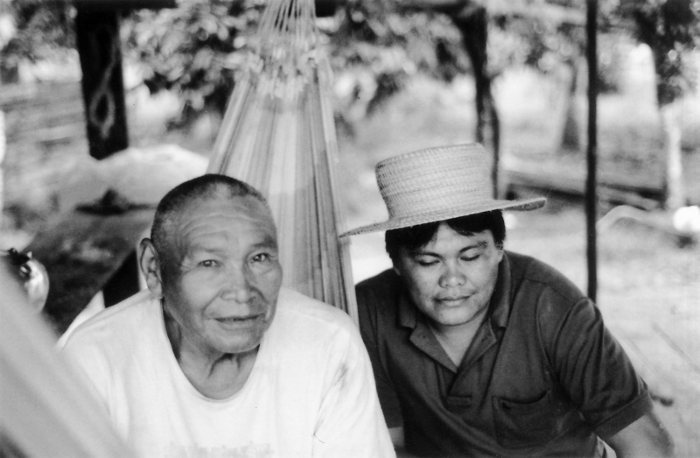
Shanenawa family organization is based on nucleuses composed of an elderly couple, their unmarried children, married sons and their wives, grandchildren and adopted children.
The group is organized in five clans: Waninawa (the peach-palm people), Varinawa (the sun people), Kamanawa (the jaguar people), Satanawa (the otter people) and Maninawa (the sky people). Children belong to their mother’s clan and in general may only marry people belonging to the same clan. This does not always happen, though, since there are many interethnic marriages, including marriages between Indians and non-Indians. Families are monogamic, although there are reports that in the past the chief could have as many as three wives.
Shanenawa political organization is centred on the figure of the chief, whose post is hereditary. The leader must dedicate himself entirely to the interests of the community, representing his people in contacts with non-indigenous public authorities. The chief has the power to take decisions, though currently the most important decisions are made collectively during meetings with other key members of the population.
[Gláucia Vieira Cândido, 2004; Carlos Antônio Bezerra Salgado, 2005]
Other forms of organization
The Shanenawa, along with other groups from the region, created an organization that works actively in defence of indigenous interests: the Organization of Indigenous Peoples of the Envira River (OPIRE). In addition, the population is apparently engaged in national-level political processes with a considerable number affiliated to political parties.
[Cely Melo de Almeida, 2002]
Naming
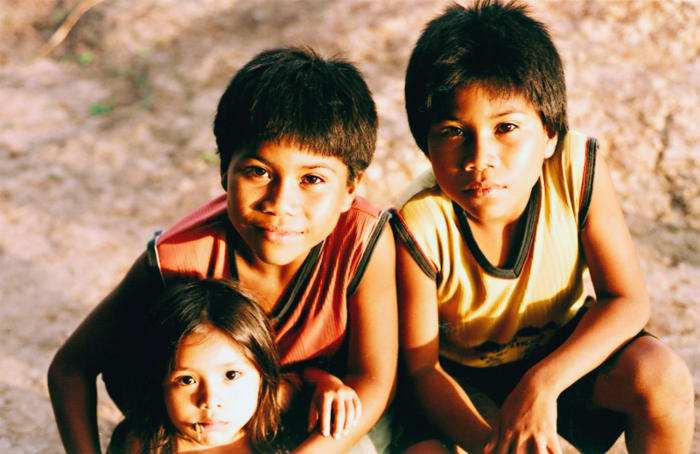
Shanenawa children receive names in their maternal language according to well-defined rules. However all people possess a non-indigenous name due to the process of civil registration. This civil obligation is not an annoyance, apparently, since they seem to like names from other origins. Indeed, it is notable that they use the non-indigenous name more, even in informal situations. The attribution of the name in Portuguese does not follow any pattern: anyone can suggest a name for the newborn child, which is usually welcomed, especially if has never been used in the village before. The child’s first name is supplemented by the Portuguese surname of the father and mother.
In the case of the indigenous name, though, there are very rigid rules for its choice since it is necessary for the names to be repeated across the generations and to belong to a common set that the Shanenawa preserve. This means that the parents choose for their children the names of their own kin according to well-defined guidelines.
[Gláucia Vieira Cândido, 2004]
Sources of information
- AGUIAR, Maria Sueli de. Os grupos nativos "Katukina". São Paulo-SP: IEL-UNICAMP, 1992.
- ALMEIDA, Cely Melo de. “Shanenawa: um povo de luta”. In: Povos do Acre – História Indígena da Amazônia Ocidental. Rio Branco, Acre, 2002.
- CÂNDIDO, Gláucia Vieira. Descrição Morfossintática da Língua Shanenawa (Pano). Tese de Doutorado. Universidade Estadual de Campinas, Instituto de Estudos da Linguagem. Campinas, SP: [s.n.], 2004.
- _____________________. “Projeto Fortalecimento da cultura Shanenawa da aldeia Nova Vida”. In: Prêmio Culturas Indígenas – Edição Xicão Xukuru. São Paulo, SESC-SP, 2008.
- SALGADO, Carlos Antônio Bezerra. Segurança alimentar em terras indígenas: os Shanenawá no rio Envira – Acre. Dissertação de Mestrado – Universidade Federal do Acre, Rio Branco-AC, 2005